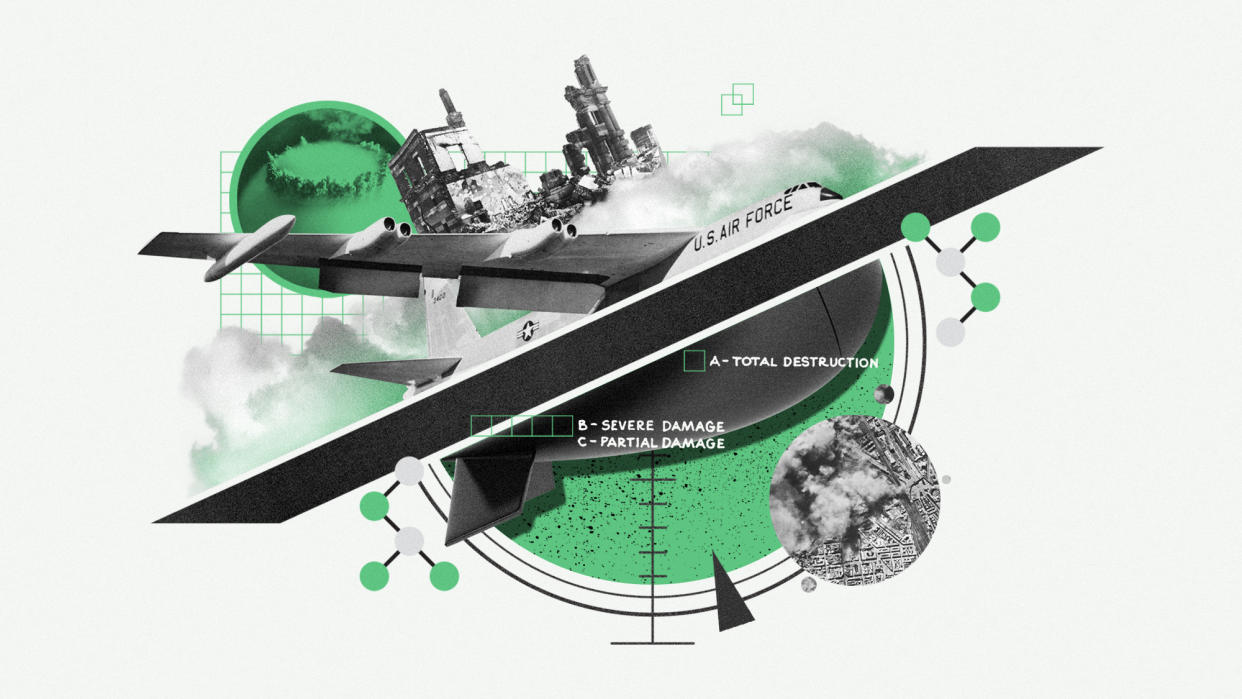Nuclear near-misses

The recent spate of attacks between Israel and Iran have ratcheted up tensions in the region and stoked fears of an imminent nuclear war.
Ali Vaez, the Iran director of the International Crisis Group, told The New York Times that "if we get into another round of tit for tat, it can easily spiral out of control" into a conflict affecting the "entire world".
Since the development of nuclear weapons during the Second World War, there have been more than a dozen "close calls" – incidents in which the deployment of such weapons was only narrowly avoided. These "perilously close shaves" expose the issues created by the "deeply flawed brains of bipedal apes" having control over "weapons with the power to flatten entire cities", said the BBC.
1961: Nukes over North Carolina
A fuel leak caused a US Air Force B-52 Stratofortress carrying two hydrogen bombs to lose power over Goldsboro, North Carolina. The aircraft broke up on descent, releasing its payload of two 3.8 megaton Mark 39 warheads, "260 times more powerful than the device that devastated Hiroshima", said The Guardian.
One of the bombs crash-landed, sustaining critical damage. However, the other warhead parachuted to the ground intact as designed, and three of the four switches designed to prevent unintentional detonations failed. "It was only that final, highly vulnerable switch that averted calamity."
Just two months later, another B-52 carrying Mark 39 warheads crash-landed over Yuba City, California. In this instance, the safety features on both bombs worked as designed.
1962: The Man Who Saved the World
At the height of the Cuban Missile Crisis, US Navy destroyers detected a Soviet submarine off the coast of Cuba. They surrounded the vessel and began dropping depth charges intended to force it to the surface, unaware the submarine was equipped with nuclear torpedoes.
With no way to contact Moscow, the final decision about whether to deploy the nuclear weapons fell to the submarine's executive officer, Vasily Arkhipov. Resisting pressure from the captain and two other senior officers, who all pushed for an attack, Arkhipov instead ordered the submarine to surface and identify itself to the US battleships.
Arthur M. Schlesinger Jr, aide to president John F. Kennedy, later called it "the most dangerous moment in human history".
1983: The (Other) Man Who Saved the World
On 26 September 1983, early-warning missile detection systems at a Soviet air force command centre near Moscow reported that multiple intercontinental ballistic missiles from the US were heading for the USSR.
This was a time of high tension between the two nations, following "months of hair-trigger alerts" over airspace, said Air & Space Forces magazine.
Fortunately, that evening's watch commander, Lt Col. Stanislav Petrov, suspected a false alarm and persuaded his superior officers to await further confirmation. It was later established that unusual atmospheric conditions had triggered the system's sensors, but without Petrov's intervention, "the world would have been plunged into global nuclear war".
1995: Yeltsin's nuclear briefcase
Even the end of the Cold War in 1991 didn't spell an end to hair-raising close calls. On 25 January 1995, early-warning radar operators detected a missile launch off the Norwegian coast, within range for an attack on Moscow. Within minutes, president Boris Yeltsin had been handed Moscow's "nuclear briefcase" and was monitoring the missile's progress on the terminal's screen.
Had Yeltsin wished to push the infamous button giving permission to launch retaliatory missiles before the supposed US attack, he had "about eight minutes" to do so, said The Washington Post. "Confusion reigned" until it became clear that the mysterious projectile was not heading for Russia. It later transpired the "missile" was a Norwegian-US research rocket launched to study the Northern Lights.